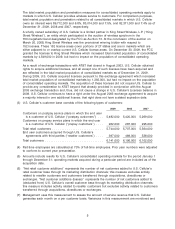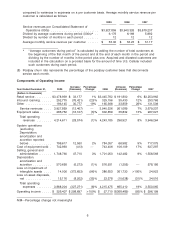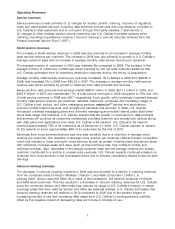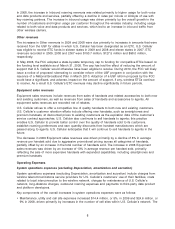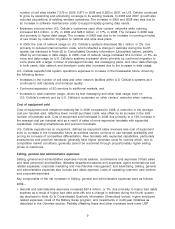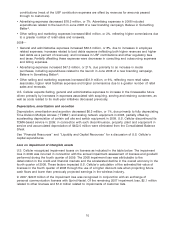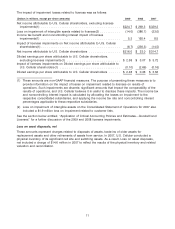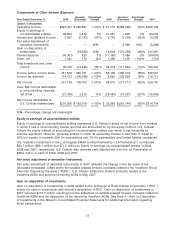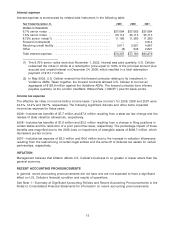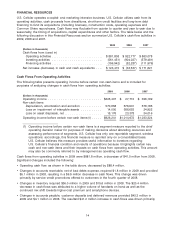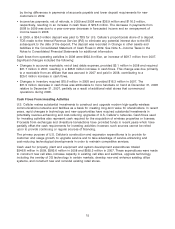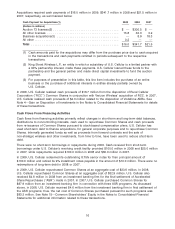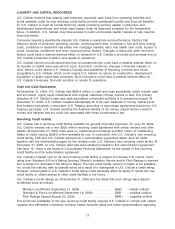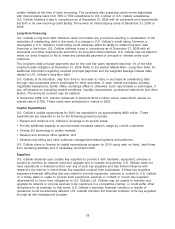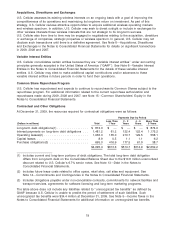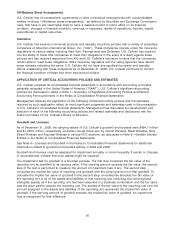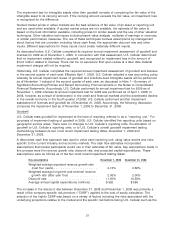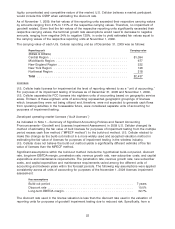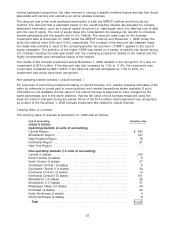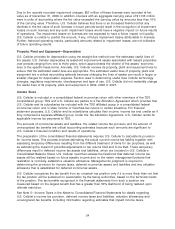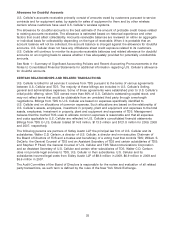US Cellular 2009 Annual Report Download - page 23
Download and view the complete annual report
Please find page 23 of the 2009 US Cellular annual report below. You can navigate through the pages in the report by either clicking on the pages listed below, or by using the keyword search tool below to find specific information within the annual report.by timing differences in payments of accounts payable and lower deposit requirements for new
customers in 2009.
• Income tax payments, net of refunds, in 2009 and 2008 were $36.9 million and $116.5 million,
respectively, resulting in an increase in cash flows of $79.6 million. The decrease in payments from
2008 to 2009 was due to a year-over-year decrease in forecasted income and an overpayment of
income taxes in 2008.
• In 2009, a $34.0 million deposit was paid to TDS for U.S. Cellular’s proportionate share of a deposit
TDS made to the Internal Revenue Service (IRS) to eliminate any potential interest due to the IRS
subsequent to the date of the deposit. The deposit was recorded in Change in other assets and
liabilities in the Consolidated Statement of Cash Flows in 2009. See Note 5—Income Taxes in the
Notes to Consolidated Financial Statements for additional information.
Cash flows from operating activities in 2008 were $922.8 million, an increase of $59.7 million from 2007.
Significant changes included the following:
• Changes in accounts receivable, net of bad debts expense, provided $5.1 million in 2008 and required
$31.7 million in 2007, resulting in a $36.8 million increase in cash flows. This change was due primarily
to a receivable from an affiliate that was accrued in 2007 and paid in 2008, contributing to a
$25.0 million increase in cash flows.
• Changes in inventory required $15.6 million in 2008 and provided $16.3 million in 2007. The
$31.9 million decrease in cash flows was attributable to more handsets on hand at December 31, 2008
relative to December 31, 2007, partially as a result of additional retail stores that commenced
operations during 2008.
Cash Flows From Investing Activities
U.S. Cellular makes substantial investments to construct and upgrade modern high-quality wireless
communications networks and facilities as a basis for creating long-term value for shareholders. In recent
years, rapid changes in technology and new opportunities have required substantial investments in
potentially revenue-enhancing and cost-reducing upgrades of U.S. Cellular’s networks. Cash flows used
for investing activities also represent cash required for the acquisition of wireless properties or licenses.
Proceeds from exchanges and divestiture transactions have provided funds in recent years which have
partially offset the cash requirements for investing activities; however, such sources cannot be relied
upon to provide continuing or regular sources of financing.
The primary purpose of U.S. Cellular’s construction and expansion expenditures is to provide for
customer and usage growth, to upgrade service and to take advantage of service-enhancing and
cost-reducing technological developments in order to maintain competitive services.
Cash used for property, plant and equipment and system development expenditures totaled
$546.8 million in 2009, $585.6 million in 2008 and $565.5 million in 2007. These expenditures were made
to construct new cell sites, increase capacity in existing cell sites and switches, upgrade technology
including the overlay of 3G technology in certain markets, develop new and enhance existing office
systems, and construct new and remodel existing retail stores.
15


